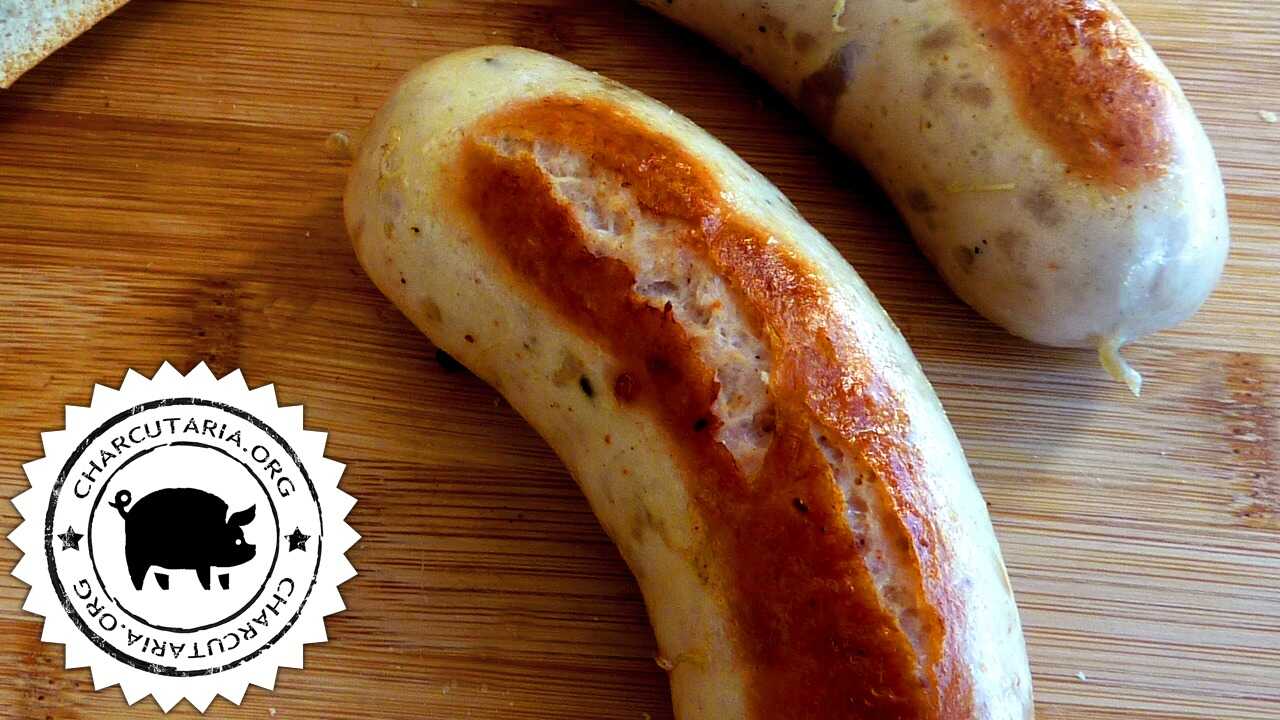
Ingredientes da Salsicha Bratwurst
As salsichas alemãs são famosas pela excelência na produção e diversidade de receitas. A salsicha Bratwurst é um tipo de salsicha alemã feita de vitela, carne bovina e/ou suína. O nome provém em alemão de Brätwurst, brät(cortada finamente) e Wurst(salsicha), embora atualmente o entendimento faça também referência ao verbo braten, que significa frito ou assado.
É importante ler esse texto introdutório antes de partir para a receita pois o segredo da salsicha está nos detalhes do processo e não na receita! Sem ler e reler o processo, preferencialmente de diferentes fontes, tentar, errar e perseverar, dificilmente alguém fará uma salsicha boa.
Fazer salsicha em casa é um desafio muitas vezes frustrante, principalmente no início, primeiramente pelo fato da necessidade de certo controle sobre as temperaturas durante a produção, em segundo por exigir potência do processador de alimentos utilizado e em terceiro pela dificuldade de embutir a massa emulsionada que é bem mais mole do que a de uma linguiça. Não é necessário um moedor de carne, pois é possível deixar todo o trabalho para o processador, mas a moagem pode facilitar o processamento. Piquei a carne, passei no moedor e coloquei no processador, que, apesar do calor gerado, mostrou-se heroico ao executar a tarefa. Detalhe importante: as lâminas de corte do processador devem estar muito bem afiadas!
Toda salsicha é o que comumente chamam de uma emulsão carnea ou, mais detalhadamente, uma mistura uniforme estabilizada de água, gordura e proteína. A estabilidade dessa mistura depende de uma boa fonte de proteína e temperatura baixa. O leite em pó também ajuda a estabilizar a massa. Caso a temperatura suba durante o preparo a gordura irá derreter e a emulsão irá desandar. A gordura empregada deve ser firme, rígida, preferencialmente da região subcutânea suína, como da barriga, pernil ou papada. O couro/pele também pode ser usado, pois é um ótimo “ligador”, mas não utilizei pois a carne era de qualidade, dispensando pele ou aditivos adicionais. Salsichas industriais usam muita pele, aditivos estabilizantes e emulsificantes pois exageram no uso de água e CMS(“Carne” Mecanicamente Separada), que é uma péssima fonte de proteína. Para saber mais sobre a legislação brasileira sobre as salsichas, veja o post Do que é feita a salsicha?
Usando equipamentos domésticos é muito difícil conseguir uma massa totalmente lisa, sem granulações, mas com um equipamento razoável e uma dose de paciência é possível chegar perto disso. Não tenha receio de parar o processo, resfriar novamente a massa e continuar processando mais tarde. A maior dificuldade está na temperatura, pois os processadores domésticos esquentam muito a massa da salsicha, que é densa e exige muito do equipamento. Caso não tenha um equipamento bom, sugiro que faça a salsicha de frango caseira, que exige menos do equipamento. Na indústria é utilizado o cutter ou o moinho coloidal. Ambos são muito eficientes em transformar tudo em uma massa lisinha.
Base
- 700g pernil;
- 150g gordura;
- 150g couro suíno.
Condimentação
- 18g sal;
- 2,5g sal de cura 1 (6,25% de nitrito e 93,75% de sal);
- 2,5g antioxidante (com eritorbato de sódio);
- 4g Pimenta branca;
- 1g Gengibre em pó;
- 2g Nóz moscada;
- 1g Kummel em grãos;
- 3g Alho em pó;
- 4g Mix rendimento (proteínas vegetais, carragena e/ou fosfatos);
- 1g Cebola em pó;
- 2g Páprica defumada;
- 200ml gelo moído.
Preparo da salsicha Bratwurst
- Limpe o pernil e separe 700g de carne, 150g de gordura e 150g de pele;
- Cozinhe a pele até ficar bem macia, desmanchando. Pode cozinhar na panela coum ou na pressão. É importante cozinhar bem para facilitar o trabalho de emulsão;
- Mantenha a carne bem refrigerada, se possível quase no ponto de congelamento;
- Moa a carne e a gordura no disco fino do moedor. Pode moer duas vezes caso seu processador não seja muito potente;
- Moa separadamente a pele ainda quente. Refrigere após moer;
- Em um processador de alimentos com a lâmina de corte, processe a carne e a gordura;
- Acrescente os condimentos, um pouco do gelo e continue processando;
- Acrescente a pele moída e continue processando até obter uma massa lisa, como uma pasta de sentes.
- Acrescente mais gelo para que a massa não ultrapasse os 10ºC;
- Embutir em tripa suína e amarrar ou torcer de 10cm em 10cm aproximadamente;
- Para finalizar a salsicha bratwurst pode usar uma churraqueira, grill ou fritar em uma panela/chapa.
- Caso queira finalizar na água, mergulhe em água a 80ºC por 15 minutos. Não deixe a água ferver ou a salsicha vai estourar.
-
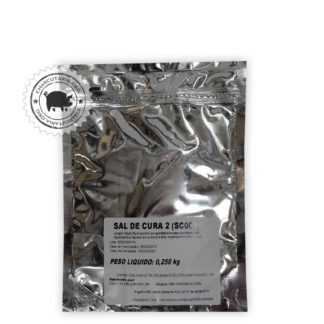 Sal de cura 2R$ 8,00
Sal de cura 2R$ 8,00 -
 Sal de cura 1R$ 8,00
Sal de cura 1R$ 8,00 -
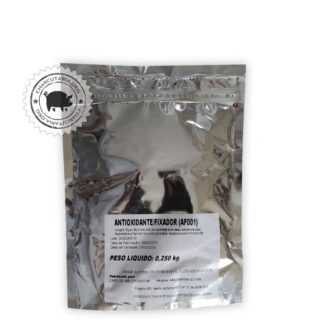 Antioxidante FixadorR$ 23,00
Antioxidante FixadorR$ 23,00 -
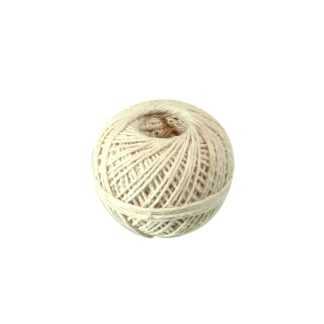 Barbante culinárioR$ 7,90
Barbante culinárioR$ 7,90 -
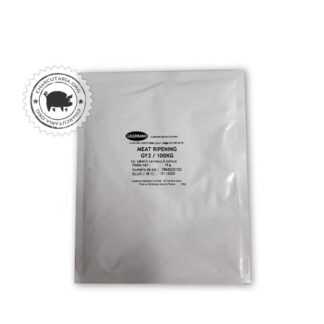 Cultura StarterO preço original era: R$ 69,90.R$ 59,90O preço atual é: R$ 59,90.
Cultura StarterO preço original era: R$ 69,90.R$ 59,90O preço atual é: R$ 59,90. -
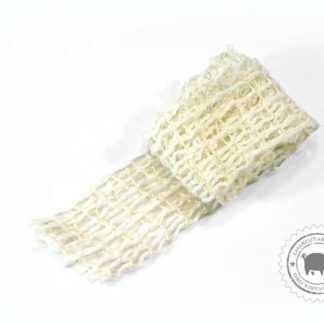 Rede elástica culinária 50mmR$ 15,00
Rede elástica culinária 50mmR$ 15,00 -
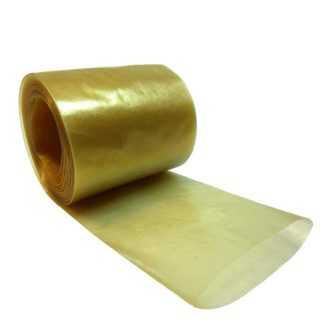 Tripa de colágeno 45mm rolo 5 metros salameR$ 25,00
Tripa de colágeno 45mm rolo 5 metros salameR$ 25,00 -
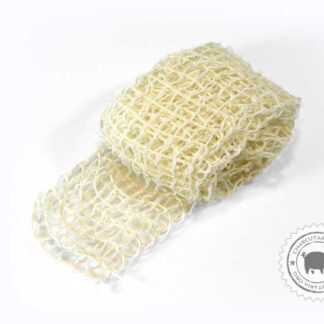 Rede elástica culinária 65mmR$ 18,00
Rede elástica culinária 65mmR$ 18,00 -
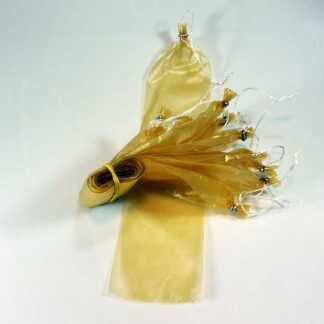 Tripa de colágeno salame 45mm 10 unidades amarradasR$ 22,00
Tripa de colágeno salame 45mm 10 unidades amarradasR$ 22,00 -
 Tripa de colágeno 80mm copa e salameR$ 29,90
Tripa de colágeno 80mm copa e salameR$ 29,90 -
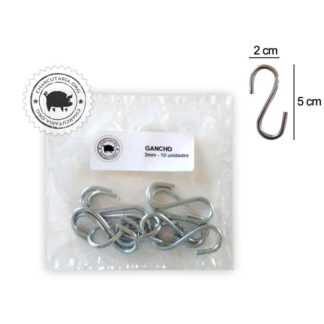 Gancho GalvanizadoR$ 12,00
Gancho GalvanizadoR$ 12,00 -
 Tripa de colágeno salame 50mm 10 unidades amarradasR$ 24,00
Tripa de colágeno salame 50mm 10 unidades amarradasR$ 24,00


Hola
Já fiz as minhas salsichas! Ficaram super deliciosos mas queria perguntar a vocês, esses 90 dias são cozidos e embalados a vácuo e congelados ou só podem ser cozidos em água, embalados a vácuo e refrigerados!
Não quero congelá-los, mas também não quero que se decomponham
me ajude com a dúvida
Gracias!
Podem ser cozidas, resfriadas rapidamente em água fria para reduzir a temperatura abaixo de 6 graus, embaladas à vácuo e refrigeradas por 90 dias. Isso usando o sal de cura. Caso queira garantir um pouco mais de proteção pode aumentar a quantidade de sal e usar um antioxidante natural extra, como o extrato de alecrim. A validade é uma estimativa baseada em produtos comerciais que passam por processos semelhantes.
Olá
Se eu usar o sal de cura e o antioxidante, você poderia me dizer por quanto tempo posso manter minhas salsichas cruas na geladeira em boas condições???
Gracias!!!
Oi Ana. A salsicha deve ser armazenada na geladeira após estar cozida(ou defumada). Bem embalada logo após ter sido cozida, preferencialmente à vácuo, vai durar por volta de 90 dias.
Muito obrigado por responder! Nos seus vídeos vejo que você usa um processador kitchenaid, eu tenho um Breville, mas tenho dificuldade com ele, esquenta e pega, como funciona o auxiliar de cozinha que você tem?
Estou pensando em comprar um, você me recomenda?
Oi Ana, para evitar que esquente pode fazer em etapas, processando porções menores. O processador da kitchenaid é muito bom, para uso caseiro ele aguenta bastante. Caso pense em produzir um volume um pouco maior recomendo que procure um cutter.
Hola
Já fiz as minhas salsichas! Ficaram super deliciosos mas queria perguntar a vocês, esses 90 dias são cozidos e embalados a vácuo e congelados ou só podem ser cozidos em água, embalados a vácuo e refrigerados!
Não quero congelá-los, mas também não quero que se decomponham
me ajude com a dúvida
Gracias!
Podem ser cozidas, resfriadas rapidamente em água fria para reduzir a temperatura abaixo de 6 graus, embaladas à vácuo e refrigeradas por 90 dias. Isso usando o sal de cura. Caso queira garantir um pouco mais de proteção pode aumentar a quantidade de sal e usar um antioxidante natural extra, como o extrato de alecrim. A validade é uma estimativa baseada em produtos comerciais que passam por processos semelhantes.
Olá Eduardo,
Fiz essa bratwurst aqui em casa e foi sucesso! Morei na Alemanha e digo que o gosto é extremamente semelhante; o Kümmel faz total diferença. Parabéns pelo conteúdo de altíssima qualidade, melhor site de charcutaria com certeza, um forte abraço!
Obrigado, fico feliz que tenham gostado dessa receita de salsicha bratwurst. O kummel tem um gosto bem especial, vale a pena usar. Um grande abraço!